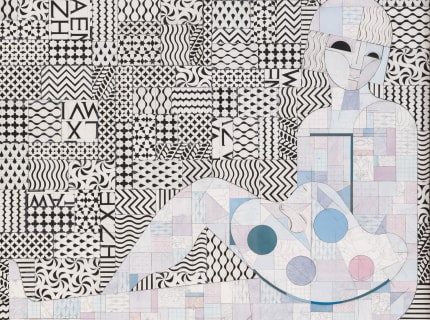The concept of Minimalism has become so mainstream that it’s now as likely to evoke a tidy sock drawer as it is a Donald Judd stack. To be fair, Judd himself rejected the label. And, in the sixties, when the abstract painter Agnes Martin was identified as part of this new formalist pack, she rejected it, too. Minimalism’s macho rhetoric—glorifying the machine-made and the rigidly specific—ran counter to her haptic approach and to her sense of a mysterious world always in flux. “You wouldn’t think of form by the ocean,” she wrote in 1966. In the group exhibition “No Forms,” on view at the Hill Art Foundation through July 15, the curator Margot Norton places a trio of Martin’s numinous works in a gratifyingly rangy conversation with recent pieces by seventeen female and gender-nonconforming artists, with an eye on restrained beauty and a slippage of categories. Paintings are sculptural (Dyani White Hawk’s exacting composition on canvas is rendered in shimmering beads), solid objects defy gravity (Agnieszka Kurant’s subtly magical “Air Rights”), and the deepest space here appears in 2-D (Tauba Auerbach’s bewitching trompe-l’oeil acrylic on paper). Ruby Sky Stiler vivifies the familiar Minimalist trope of the grid—and thumbs her nose at the movement’s rule of no figures allowed—in her effervescent, mosaic-like portrait, “Father and Child” (pictured above). (Hill Art Foundation; May 12-July 15.)
"NO FORMS"
The New Yorker
July 1, 2022

